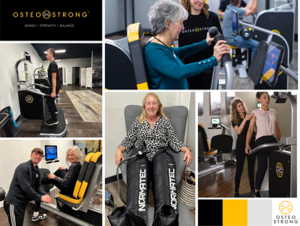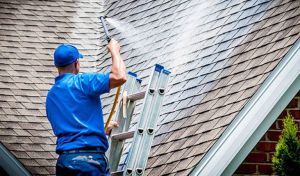Choosing the right garage door is one of the biggest home improvement decisions most homeowners will ever make. Purchasing during the winter is often the best time to get the lowest prices due to seasonal sales.
Ensure safety by having moving parts lubricated every six months. Also, inspect and test the balance of your door annually. Contact JCTZ Garage Doors now!

Garage doors aren’t just a necessity for most homeowners, they’re also an important component of home design. While they may seem like a simple fixture to some, they have a long and interesting history behind them. From simple structures that were first created for practical purposes to high-tech components that are used for security, these doors have come a long way over the years.
With cars becoming more and more popular, it became necessary to have a place to store them. Prior to the invention of the car, people stored their vehicles in carriage houses, which were large barn-like buildings where horse and buggy were kept. Unfortunately, keeping cars in a building where horses and bugs were stored created an unpleasant odor that was difficult to get rid of. As a result, large public or private garages were established where car owners could park their cars and store them away from horses and bugs.
As technology improved, more households were able to afford their own cars. As a result, the garage door became an integral part of every home. During the industrial revolution, new machinery and manufacturing processes enabled garage doors to be produced in higher quantities at lower costs. This made them more affordable to the average household, allowing people of all economic backgrounds to purchase their own garage doors.
During this time, many different garage doors were invented. Initially, these were large panels that opened by sliding on tracks. While this was a step in the right direction, it still wasn’t ideal because these doors took up much of the garage space. Then, in 1921, a man named C.G. Johnson founded the Overhead Door Company. His breakthrough was to create a garage door that was split into sections that folded up vertically, conserving space in the garage.
This was also around the same time when the modern garage door opener was developed. Previously, garage door openers were operated manually by a crank or pulley. The modern garage door opener uses a remote control device to send a signal to the motor, which then opens or closes the garage door. Modern openers also use rolling codes instead of static ones that remain the same every time.
Styles
What style garage door you choose depends on your personal preference and the way your house looks. Many homeowners choose traditional or carriage house garage doors for a classic aesthetic while those with modern-style homes opt for sleek glass-paneled options. In addition, some consider practicality and functionality when selecting a garage door, as some styles may be more difficult to operate or require more maintenance than others.
A classic option that operates just like a bifold closet door, side-hinged garage doors open from a hinge on each side of the garage opening. This type of garage door is a great choice for garages with limited headroom as it can sit closer to the ground when open. This style is simple and easy to maintain, which makes it a popular choice for busy homeowners.
One of the most popular types of garage doors, sectional garage doors consist of panels that are joined by hinges. As the garage door opens and closes, the panels bend over a curved track system to sit parallel with the garage ceiling when completely open. This garage door style provides both style and functionality, as it is often available with insulation to keep the garage warm or cool as needed.
Contemporary garage doors offer clean lines and minimalist design elements, making them ideal for homeowners who prefer a sleek look. These doors typically have glass panels that allow natural light to flood the garage for a brighter, more inviting space. They can also include shorter rectangular windows to provide a hint of architectural detail.
A more upscale version of the traditional garage door, these doors feature steel or aluminum frames that support a series of windows. Some of these windows are frosted, while others are clear to let in more natural light. While this garage door style is more expensive than other options, it can add a sense of luxury to your home’s exterior.
Inspired by late medieval and Renaissance architecture, Tudor-style homes have a distinctive silhouette with decorative hinges and hardware. These types of garage doors pair well with classic wood finishes and wrought iron accents, as they complement the decorative details of these home styles.
Materials
Choosing the right material for your garage door depends on many factors, including weather conditions, maintenance preferences and energy efficiency needs. The most popular material is steel, which offers a wide range of design options and durability. It is highly resistant to corrosion and requires little or no maintenance, making it a cost-effective choice. Steel doors also provide good insulation and are durable against damage from dents, scratches, and wind-load pressure.
Wood garage doors add a warm aesthetic to any home and offer greater design flexibility than other materials. They are often field-stained or painted, allowing homeowners to customize their finish and match the existing color of their home. However, wood is prone to warping and deterioration when exposed to moisture, so it requires regular maintenance and care to shield it from the elements.
Faux wood garage doors can be a practical alternative to natural wood and offer the same visual appeal with less maintenance requirements. They are manufactured using recycled wood fibers and a robust resin, making them extremely versatile and resistant to wear. Some models are designed to resemble the traditional appearance of wood, while others feature contemporary or modern aesthetics.
Aluminum is another affordable and durable option that offers excellent insulating properties. It is lightweight and resists rust and corrosion, making it a popular choice for coastal areas. Its smooth, sleek surfaces can also enhance the aesthetic of modern homes.
Composite and fiberglass garage doors are a great compromise between the natural beauty of wood and the durability of other materials. They are constructed with wood and non-wood components and can be customized with different overlays and grooves to create a unique look for any home. Some models incorporate a polystyrene or polyurethane insulation to improve energy efficiency.
Depending on the type of garage door you choose, there are several different types of tracks that facilitate movement. Rollers are small components that fit on the track and help guide the door. They are available in nylon, steel or durable plastic and come in a variety of colors to complement the exterior of your home. Choosing the right type of track for your garage door helps ensure smooth, trouble-free operation and safety. Regular inspection, cleaning and lubrication will help to maintain optimal performance and extend the life of your door.
Installation
If you’re a do-it-yourselfer, it may be possible to hang your own garage door. It will require electrical knowledge, carpentry skills and stud-finding. If you’re not experienced in these areas, it’s a good idea to hire professionals. A professional installation includes a warranty for peace of mind.
Before starting, measure the doorway opening with a tape measure. This will help you get the right size panels. Your panels will be made slightly smaller than the opening to ensure that they fit properly and don’t rub against the wall of your garage. Once you have your panels, it’s time to start installing them. If you’re hanging them yourself, it’s important to wear gloves and a face mask. You’ll be working with a lot of wire, and you don’t want to inhale any dust or debris.
Begin by installing the bottom panel, which will serve as a foundation for the rest of your doors. Then install the middle and then the top panel. Remember to install the hinges and rollers as you go, so the panel edges will be perfectly aligned. Then, install the horizontal tracks to guide the panels in place.
If you’re using a garage door opener, install the header bracket first. It will hold the carriage tube, which will later connect to your power unit. Install the free end of the carriage tube on the header bracket. You’ll also need to install a safety system, which usually consists of sensors that detect objects in the path of the door.
You can also install a keypad, which will give you the option to enter your home without using a remote. You’ll type in a PIN to open your garage door, and this can be useful if you need to let someone in for a repair or delivery.
Finally, inspect and maintain your garage door regularly. This will prevent rust and extend its life. Apply a lubricant to moving parts like hinges and rollers every six months, and test for misalignment annually. If you notice any signs of damage or rust, call a professional for assistance before the problem escalates.








